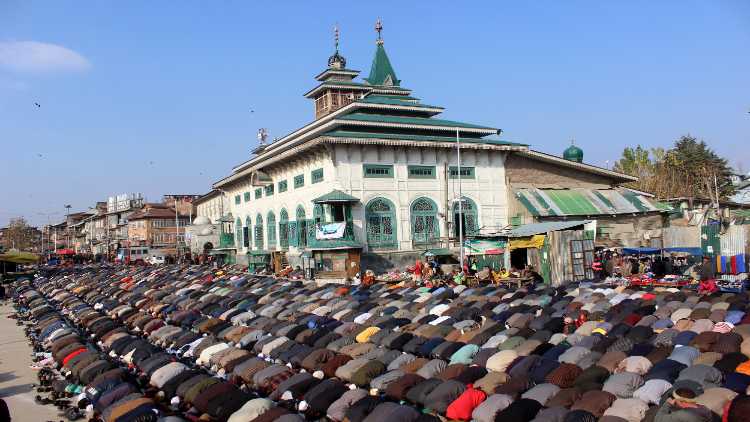
Ehsan Fazili/Srinagar
Some 11 years ago, the Indian National Trust for Art and Cultural Heritage (INTACH) had the foresight to digitalize ten key shrines of Sufi Saints in Kashmir that are of immense heritage value, not knowing that it would soon prove to be a boon.
It was Two years later -in June 2012 - the shrine of Peer Dastgeer Sahib, located in the Khanyar locality of Srinagar downtown, was gutted in a fire triggered by electric short-circuiting. It caused tension with chief Mufti announcing a two-day shutdown and a pall of gloom descending across the Valley.
The shrine houses the memory and relics of Persian Sufi Syed Abdul Qadir Jeelani (1077-1166), popularly known as Peer Dastgeer Saheb, who had never visited Kashmir, and yet his fame had earned him so much respect and followers in a faraway land.
He died in Baghdad and was buried there.
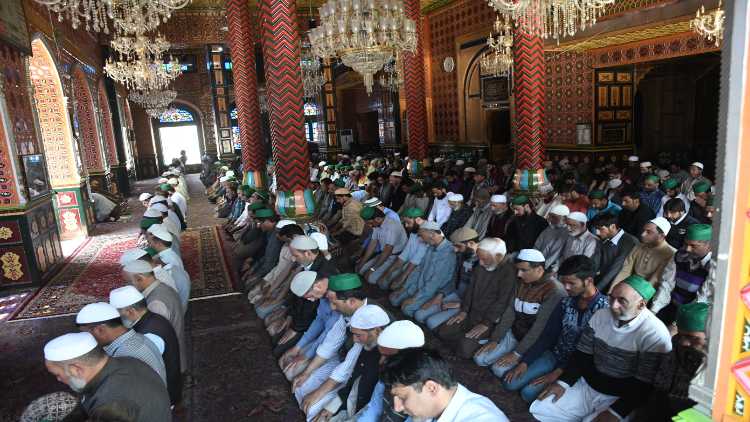
Prayers inside the shrine after it was thrown open
The destruction of this wooden shrine was widely mourned in Kashmir prompting the government to decide on its reconstruction. Mohammad Saleem Beg, who heads the J&K chapter of INTACH, was entrusted with the job of resurrecting the shrine virtually from the ashes.
“We had already digitalized the shrine as part of making digital records of even the minutest structural and design aspects of 10 major shrines in Kashmir,” said Saleem Beg, who took up the challenge.
The digital records helped the Government and it's agencies a great deal in reconstructing the place of worship and reverence on the original pattern to fulfilling the aspirations of people who have their sentiments attached to the Sufi saint.
This 19th-century structure “had a lot of decorations, calligraphy on its walls, Khatamband ceiling ….”, Beg explained.
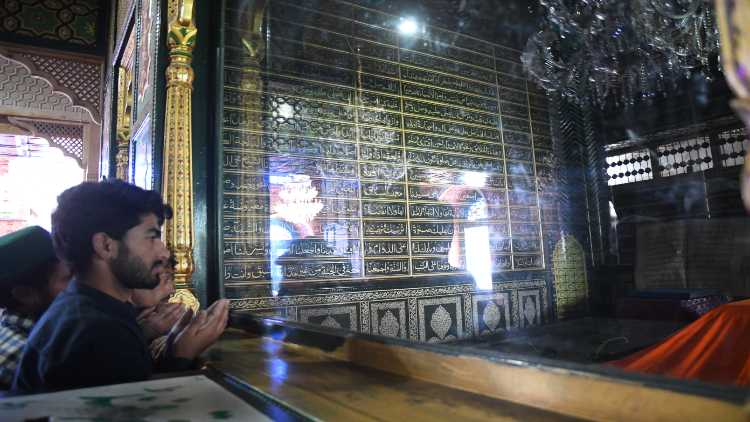
Kashmiri youth in large numbers throng the shrine
He said the shrine had been built on a marsh and had a floating plinth; the building was also shaky. Everything had been minutely examined and an Archeological survey conducted. “We found that it was not a rigid structure …but essentially an earthquake-resistant structure”, he commented.
Beg said that the shrine was reconstructed on the same pattern, brick by brick, with Kibriyat-e-Ahmar (prayers book) calligraphy restored along the original lines on its walls. Major restoration work continued for five years, during which the shrine and its additional block were completed. Some small works are still going on.
Khalid Geelani Sajjadanashin of the Shrine said “80 percent of the work has been completed, but no up-gradation was going on for the past five years. “The new structure has come up as it was and there is no change in the structure,” he said.
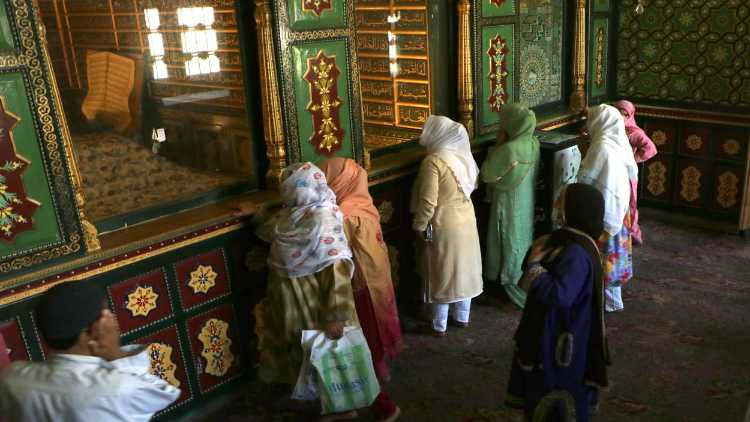
Women praying inside the shrine
The only modifications are minor ones like making a separate walkway for taking the relics on the occasions of the display during the annual Urs, to ensure safety and security. The 20 percent remaining works involve mainly the beautification part.
The doors of Peer Dastgeer Saheb at Khanyar in Srinagar city, remain closed for the devotees as part of the Covid-19 protocol.
In fact, the shrine administration had closed it four days before the government of the UT had imposed restrictions on people visiting mosques and shrines during Ramazan in view of the threat of the Covid-19 pandemic.
“It was not logical to expose people to risk under the present situation that has arisen due to the sudden rise in the number of Corona positive cases”, said Khalid Geelani.
Devotees from all over the Kashmir valley in large numbers throng the 200 years old shrine on the annual Urs during the first 11 days of Rabi-ul-Saani, the fourth month of the Islamic calendar, and other religious festivals, apart from the prayers, five times a day. The holy relics are displayed during the annual Urs.
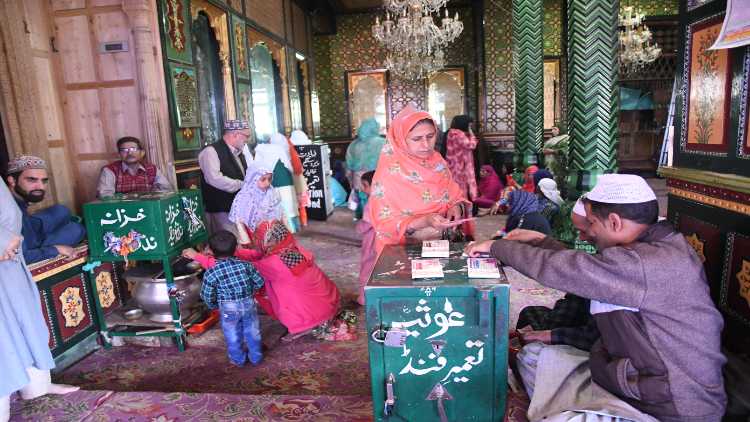
Women and children taking tubruk during the urs
The shrine houses the relics, the oldest copy of the Quran written by Hazrat Ali, and the hair of the saint that was presented by an Afghan traveler to the then Kashmir’s Afghan Governor, Sardar Abdullah Khan. The shrine was later built in 1806 and it was expanded in 1877 by Khwaja Sanaullah Shawl. The shrine was built again as a mark of respect to the Sufi saint 200 years ago.
The expansion work on the shrine had been earlier done about 60 years ago, which has been maintained, according to the management. The structure also has five graves of the descendants of the Sufi saint.
